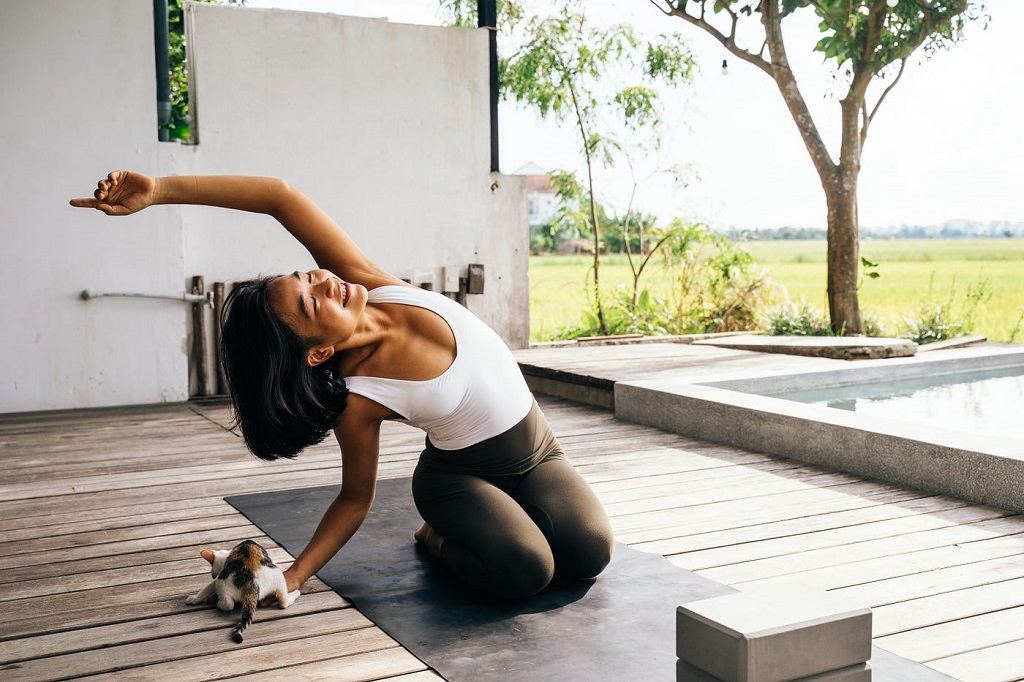Do you want to fill your life with vitality and energy? Release the tensions of the daily routine? The Sasangasana is one of the basic yoga postures, which is why it is perfect to get started in this discipline that has many benefits to improve physically and mentally.
With the rabbit posture, we will achieve a total stretching of the spine, which can be injured by adopting bad postures in our daily tasks at home or at work.
Therefore, we invite you to learn everything related to the Sasangasana. Here, we will not only indicate the basic rules of this exercise, but also its benefits and contraindications. Join us!
Contents
The Rabbit Pose or Sasangasana
One of the asanas that offer us the most benefits is the rabbit pose, as it helps us achieve greater flexibility in our spine and oxygenates our blood.
In addition, the Sasangasana is ideal for relaxing the muscles of the back, neck, and shoulders. It also stimulates the endocrine system and offers relief from insomnia, depression, colds, sinusitis, and tonsillitis.
This pose is the opposite of camel pose or Ustrasana and is used as an introductory practice to inverted poses and meditation exercises.
This asana evokes nostalgia since it can connect us with childhood games and with nature. It is undoubtedly one of the most beautiful yoga postures and its relaxing effect makes it one of the favorite techniques for those seeking tranquility.
The meaning of Sarvangasana
Within the types of yoga, the Sasangasana is another posture that has a curious meaning.
Its name derives from the similarity of the position of the spine of the rabbit, in its Sanskrit language, Sasanga means rabbit and asana means posture. Therefore, literally, the meaning of Sasangasana is “rabbit pose”.
It is a yoga posture for beginners, which serves as preparation for more advanced inverted postures. It is important to note that the roundness and stretching of the spine that this flexion generates allows the heart chakra to work.
Likewise, it is ideal for students, since they must maintain a bent posture for a long time, as well as for those who work in offices and spend long hours working in front of the computer.
Sasangasana: How to Do the Rabbit Pose Step by Step
- The Sasangasana yoga posture, like all yoga postures, requires a specific technique to do it correctly. Let’s see below the steps to follow to practice this exercise and achieve the expected results.
- Sit up straight on your heels, with your thighs resting on your shins.
- Get up and get on your knees, you should separate your knees to the height of the hips.
- Place the balls of your feet flat on the ground.
- Bend forward slowly on an exhale, placing your forehead on the yoga mat in front of your knees.
- Turn your head until the crown rests on the ground.
- Bring your hands stretched back until you hold your heels.
- Raise your hips as high as you can, until your thighs are totally straight. It is advisable to rise slowly to avoid possible dizziness.
- Stay in this position for 30 seconds and breathe normally.
- Get up slowly and relax in balasana position or child’s pose.
Benefits of the Rabbit Pose
Practicing the Sasangasana pose, in addition to relaxing us and providing us with mental and emotional well-being, offers us other benefits of yoga that are common to other asanas. Let’s see what they are:
- Allows full stretching and lengthening of the spine.
- It is therapeutic for the endocrine and immune systems.
- It comforts sleep, which is why it is perfect and ideal for people who suffer from insomnia.
- Relieves tension in arms, shoulders, neck, and back.
- Oxygenates the circulatory system, improving blood flow to the brain.
- Relieves common symptoms of colds and sinusitis.
- Improves depression, mental fatigue, and diabetes.
- It is a great ally to make our bodies more flexible.
- Activates the digestive system.
- The abdomen is benefited since it strengthens it.
- It calms our minds and allows greater concentration.
- It is an exercise that helps reduce stress.
Contraindications of Sasangasana
This asana should not be performed by people who have fractures, bruises, or any injury to the spine, neck, or knees, as it can be dangerous and affect these parts of the body more when performing the movements. Likewise, this position is contraindicated in patients with pathologies of a cardiac nature and hypertension.
It is also advisable to consult and take into account the opinion of your doctor, especially before beginning the practice of this posture or any other hatha yoga to avoid unfavorable reactions to your health. Similarly, it is advisable to have the guidance of a professional in yoga postures to perform this activity.




